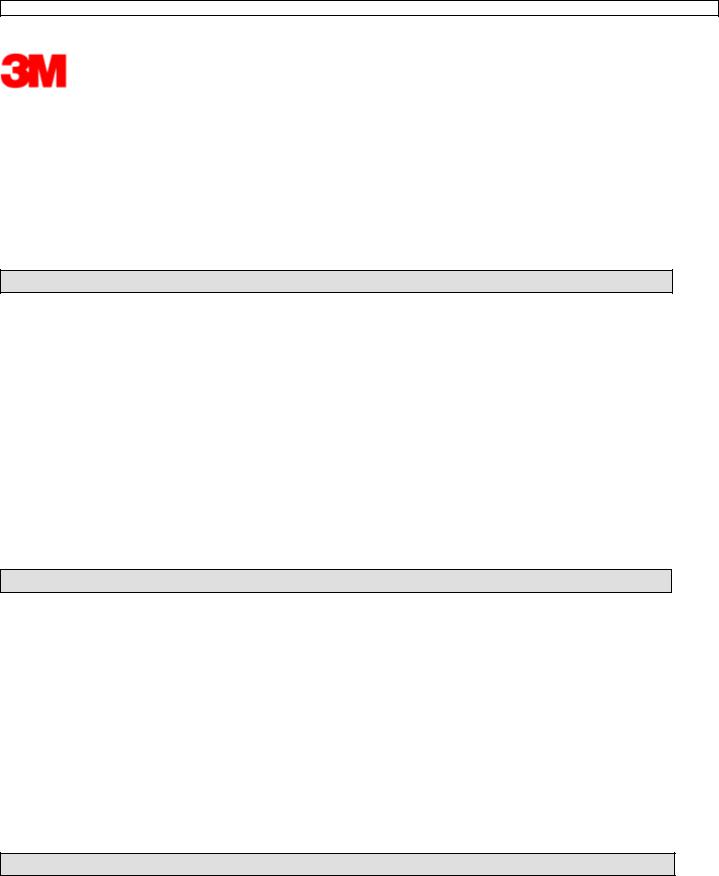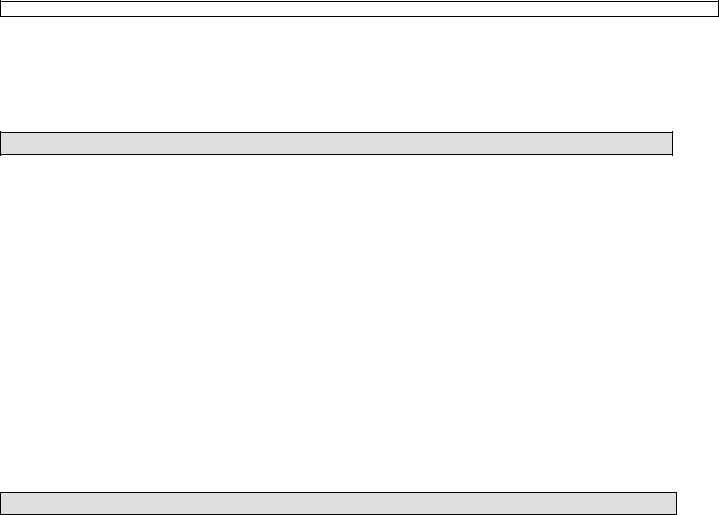3M B298579, B1770671, B1773438, B1798071 User Manual

3M™ Scotch-Brite™ Products, 7445, Light Duty Pad, Clean & Finish F SFN 10/02/14
Safety Data Sheet
Copyright,2014,3M Company.
All rights reserved. Copying and/or downloading of this information for the purpose of properly utilizing 3M products is allowed provided that: (1) the information is copied in full with no changes unless prior written agreement is obtained from 3M, and (2) neither the copy nor the original is resold or otherwise distributed with the intention of earning a profit thereon.
Document Group: |
05-5946-8 |
Version Number: |
18.06 |
Issue Date: |
10/02/14 |
Supercedes Date: |
03/26/14 |
SECTION 1: Identification
1.1. Product identifier
3M™ Scotch-Brite™ Products, 7445, Light Duty Pad, Clean & Finish F SFN
1.2. Recommended use and restrictions on use
Recommended use
Abrasive Product
1.3. Supplier’s details |
3M |
MANUFACTURER: |
|
DIVISION: |
Abrasive Systems Division |
ADDRESS: |
3M Center, St. Paul, MN 55144-1000, USA |
Telephone: |
1-888-3M HELPS (1-888-364-3577) |
1.4. Emergency telephone number
1-800-364-3577 or (651) 737-6501 (24 hours)
SECTION 2: Hazard identification
2.1. Hazard classification
Not classified as hazardous according to OSHA Hazard Communication Standard, 29 CFR 1910.1200.
2.2. Label elements Signal word
Not applicable.
Symbols
Not applicable.
Pictograms
Not applicable.
2.3. Hazards not otherwise classified
None.
SECTION 3: Composition/information on ingredients
Ingredient |
C.A.S. No. |
% by Wt |
__________________________________________________________________________________________
Page 1 of 8

3M™ Scotch-Brite™ Products, 7445, Light Duty Pad, Clean & Finish F SFN 10/02/14
Nepheline Syenite Mineral |
37244-96-5 |
25 - 35 |
|
Titanium Dioxide |
13463-67-7 |
0.1 - |
2.5 |
Polyester Fiber |
Mixture |
40 - |
55 |
Cured Resin |
Mixture |
20 - 30 |
|
SECTION 4: First aid measures
4.1. Description of first aid measures
Inhalation:
Remove person to fresh air. If you feel unwell, get medical attention.
Skin Contact:
Wash with soap and water. If signs/symptoms develop, get medical attention.
Eye Contact:
Flush with large amounts of water. Remove contact lenses if easy to do. Continue rinsing. If signs/symptoms persist, get medical attention.
If Swallowed:
No need for first aid is anticipated.
4.2.Most important symptoms and effects, both acute and delayed
See Section 11.1. Information on toxicological effects.
4.3.Indication of any immediate medical attention and special treatment required
Not applicable
SECTION 5: Fire-fighting measures
5.1. Suitable extinguishing media
In case of fire: Use a fire fighting agent suitable for ordinary combustible material such as water or foam to extinguish.
5.2. Special hazards arising from the substance or mixture
None inherent in this product.
Hazardous Decomposition or By-Products |
|
Substance |
Condition |
Carbon monoxide |
During Combustion |
Carbon dioxide |
During Combustion |
5.3. Special protective actions for fire-fighters |
|
No special protective actions for fire-fighters are anticipated. |
|
|
|
SECTION 6: Accidental release measures |
|
6.1.Personal precautions, protective equipment and emergency procedures
Observe precautions from other sections.
6.2.Environmental precautions
Not applicable.
6.3. Methods and material for containment and cleaning up
__________________________________________________________________________________________
Page 2 of 8

3M™ Scotch-Brite™ Products, 7445, Light Duty Pad, Clean & Finish F SFN 10/02/14
Not applicable.
SECTION 7: Handling and storage
7.1. Precautions for safe handling
For industrial or professional use only. Avoid breathing of dust created by sanding, grinding or machining. Combustible dust may form by action of this product on another material (substrate). Dust generated from the substrate during use of this product may be explosive if in sufficient concentration with an ignition source. Dust deposits should not be allowed to accumulate on surfaces because of the potential for secondary explosions.
7.2. Conditions for safe storage including any incompatibilities
No special storage requirements.
SECTION 8: Exposure controls/personal protection
8.1. Control parameters
Occupational exposure limits
If a component is disclosed in section 3 but does not appear in the table below, an occupational exposure limit is not available for the component.
Ingredient |
C.A.S. No. |
Agency |
Limit type |
Additional Comments |
Titanium Dioxide |
13463-67-7 |
ACGIH |
TWA:10 mg/m3 |
A4: Not class. as human |
|
|
|
|
carcin |
Titanium Dioxide |
13463-67-7 |
CMRG |
TWA(as respirable dust):5 |
|
|
|
|
mg/m3 |
|
Titanium Dioxide |
13463-67-7 |
OSHA |
TWA(as total dust):15 mg/m3 |
|
Nepheline Syenite Mineral |
37244-96-5 |
CMRG |
TWA(respirable):5 mg/m3 |
|
ACGIH : American Conference of Governmental Industrial Hygienists
AIHA : American Industrial Hygiene Association
CMRG : Chemical Manufacturer's Recommended Guidelines
OSHA : United States Department of Labor - Occupational Safety and Health Administration
TWA: Time-Weighted-Average
STEL: Short Term Exposure Limit
CEIL: Ceiling
8.2. Exposure controls
8.2.1. Engineering controls
Provide appropriate local exhaust ventilation for sanding, grinding or machining. Use general dilution ventilation and/or local exhaust ventilation to control airborne exposures to below relevant Exposure Limits and/or control dust/fume/gas/mist/vapors/spray. If ventilation is not adequate, use respiratory protection equipment. Warning: Excessive operating speed or generation of extreme heat may result in harmful emissions. Use local exhaust ventilation. Provide local exhaust at process emission sources to control exposure near the source and to prevent the escape of dust into the work area. Ensure that dust-handling systems (such as exhaust ducts, dust collectors, vessels, and processing equipment) are designed in a manner to prevent the escape of dust into the work area (i.e., there is no leakage from the equipment).
8.2.2. Personal protective equipment (PPE)
Eye/face protection
To minimize the risk of injury to face and eyes, always wear eye and face protection when working at sanding or grinding operations or when near such operations. Select and use eye/face protection to prevent contact based on the results of an exposure assessment. The following eye/face protection(s) are recommended:
Safety Glasses with side shields
Skin/hand protection
__________________________________________________________________________________________
Page 3 of 8
